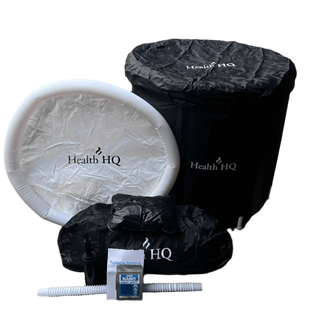Can Cold Water Immersion Improve Mental Resilience and Impact Mood?
Cold water immersion (CWI)—the practice of submerging the body in cold water—has surged in popularity not only for physical recovery but also for its potential mental health benefits. In this post, we’ll explore how CWI may bolster mental resilience, lift your mood, and share best practices so you can harness the power of the cold safely.
What Is Cold Water Immersion?
Cold water immersion involves submerging up to waist or chest level in water typically between 10°C and 15°C (50°F–59°F) for 2–10 minutes.
It triggers physiological responses—vasoconstriction, controlled stress response—that may translate to mental benefits.
Does CWI Improve Mental Resilience?
Yes. Regular exposure to cold water conditions the mind to tolerate discomfort, strengthening stress-coping mechanisms.
Over time, guided CWI sessions teach you to control your breathing under stress, reinforcing a “mind-over-body” mindset. Athletes and high-performers often report greater focus and the ability to stay calm during high-pressure situations after consistent practice.
How Does CWI Impact Mood?
Cold immersion releases endorphins and norepinephrine, producing a natural “high” that combats anxiety and depression.
That initial shock of cold prompts your body to flood with mood-enhancing neurotransmitters. Many practitioners describe feeling energized, alert, and mentally refreshed for hours post-dip, making CWI a simple, drug-free mood booster.
Scientific Evidence Behind CWI and Mental Health
- Stress Hormone Regulation
- Studies show CWI lowers cortisol levels over repeated sessions.
- Neurotransmitter Release
- Research indicates elevations in endorphins and norepinephrine immediately after immersion.
- Resilience Training
- Clinical trials on “hormetic stress” find that controlled cold exposure improves emotional regulation.
Collectively, these findings suggest CWI isn’t just anecdotal hype—it has measurable effects on brain chemistry and stress tolerance.
How to Practice CWI Safely for Mental Benefits
- Start Gradually
- Begin with 1–2 minutes at the higher end of the temperature range.
- Focus on Breathing
- Inhale deeply through the nose, exhale slowly through the mouth to manage shock.
- Increase Duration Carefully
- Add 30 seconds per session until you reach 5–8 minutes.
- Monitor Your Body
- Exit immediately if you feel dizziness, numbness, or extreme discomfort.
- Warm Up Afterwards
- Use gentle movement or a warm drink to restore core temperature.
Tip: Always consult a healthcare professional before beginning CWI if you have cardiovascular issues or cold sensitivities.
Cold water immersion offers more than just physical recovery—it’s a powerful tool for sharpening mental resilience and lifting your mood naturally. By starting slowly, focusing on breath control, and listening to your body, you can safely integrate CWI into your routine and experience the emotional benefits of a well-managed hormetic stress response. Ready to take the plunge? Check out our full range of cold therapy solutions at the HealthHQ Cold Therapy Collection to find the perfect setup for your next session.







